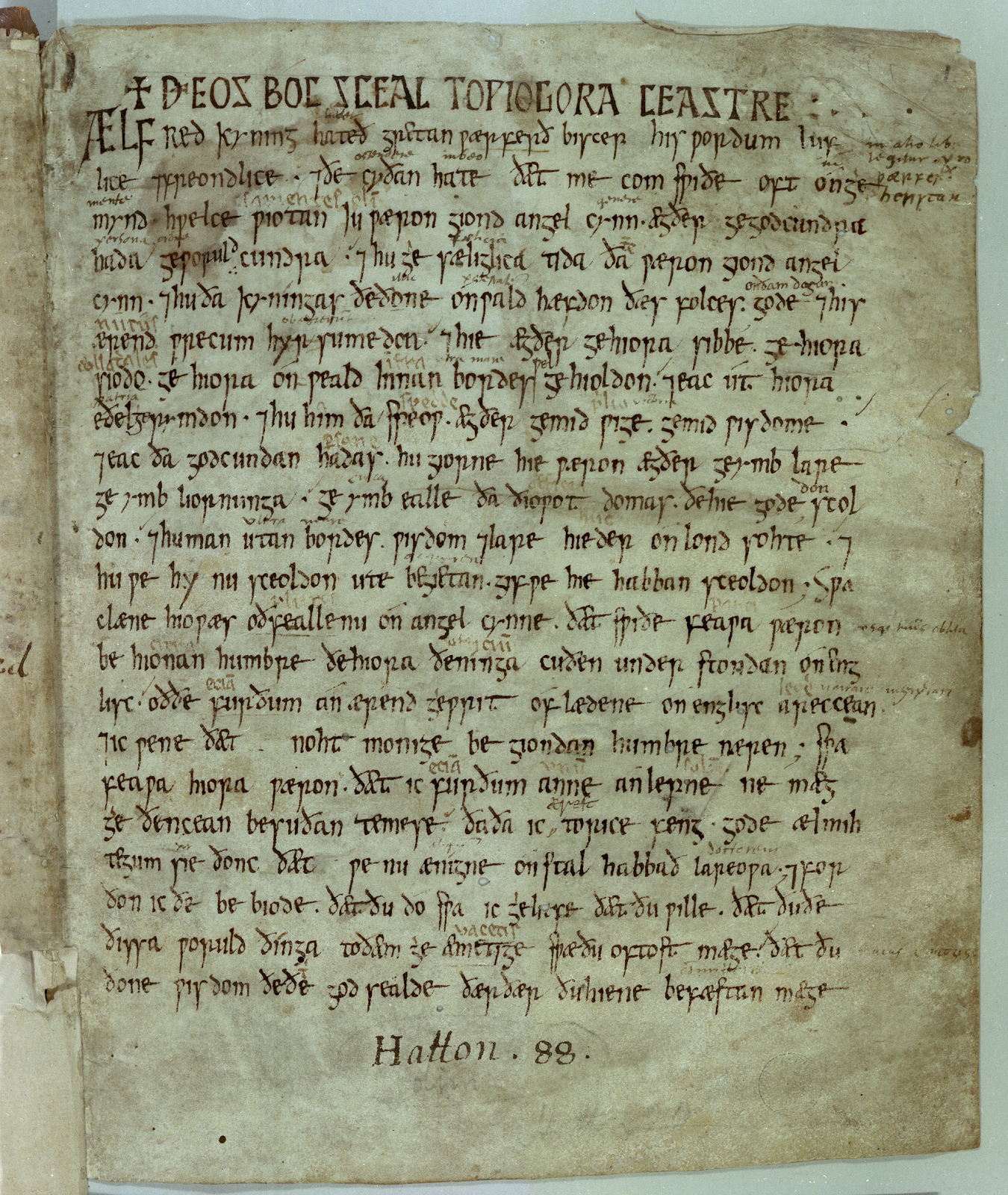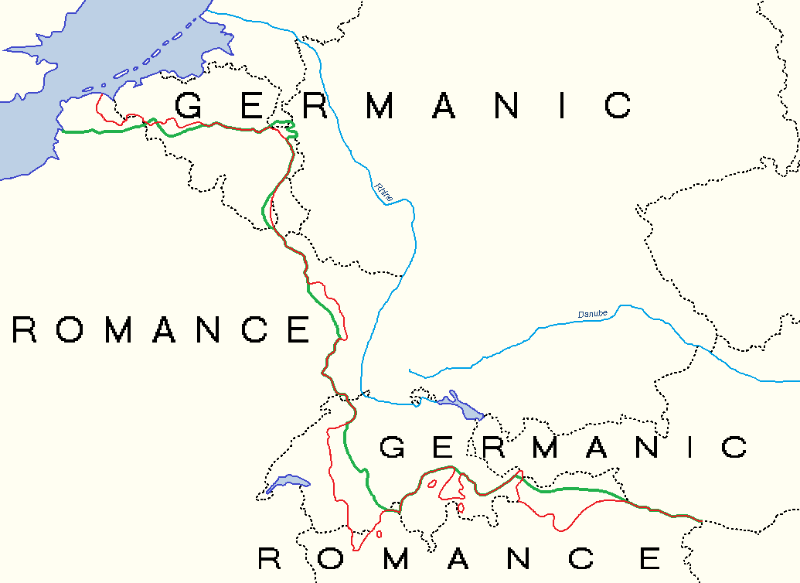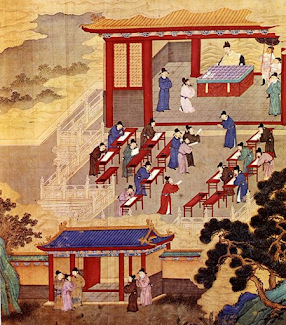 |
| In this early tenth century manuscript illustration, thought to be based on a lost ninth century original, Charlemagne has a conversation with his son, Pippin of Italy. Meanwhile a scribe, not obviously a cleric (since he isn't tonsured), writes down the minutes of their meeting |
You've almost certainly heard it said by someone, somewhere that only priests and monks were literate in the Middle Ages. Now I'm going to say this from the outset. Like so many other things that people think they know about the Middle Ages, from widespread belief in a flat earth and armoured knights being lifted onto their horses by cranes, to iron maidens, chastity belts and the droit de seigneur, this is a MYTH! But of course, the biggest myth about the Middle Ages is that for a whole millennium of history nothing much changed at all. In fact, I'd argue that the period 500 - 1500, give or take half a century on either side, makes absolutely no sense as a single historical epoch. So which segments of the Middle Ages are we talking about when we say that people other than clerics could read and write.
As longtime readers of this blog will know, and as you might have figured from the title, I'm of course interested here in the early Middle Ages, by which I mean the period before the year 1000. Now while medievalists of all shapes and sizes can unite against ancient historians/ classicists, early modernists and modernists being ignorant or dismissive about the Middle Ages, that's where it ends.
In the context of medieval literacy, a specialist on the high and late Middle Ages (1000 - 1500) could laugh at the assertion that only the clergy could read and write in the Middle Ages, and say "you what mate? Haven't you heard of Wolfram Von Eschenbach, Marco Polo, Dante Alighieri, Geoffrey Chaucer, Catherine of Siena, Christine de Pizan or Margaret Paston? Have you not considered the thousands of financial accounts, property deeds, tax records and other government documents, law books, books of hours, chivalric romances and other works vernacular literature that could hardly have been the preserve of a small clerical elite? Think before you speak again, you ignoramus!"
But those same people might then say, "but for the period before the year 1000, you're probably right. I don't want to offend my early medievalist colleagues too much, but you might be right in calling those the real Dark Ages."
Indeed this is sort of the thrust of three classic studies of Medieval literacy (both of them now 40+ years old), namely Malcolm Parkes' "The Literacy of the Laity" (1973), Michael Clanchy's "From Memory to Written Record" (1979) and Brian Stock's "The Implications of Literacy" (1983). All three of them are rightly celebrated, as they essentially kickstarted the study of medieval literacy as a serious academic sub-field - they themselves took their cues from the pioneering anthropologically-inspired work of ancient historians and early modernists. While both of them argued that reading and writing had a huge level of importance to medieval government, society and culture, they were focusing on the high and late middle ages. They saw all of this the product of a great transformation taking place in the eleventh to thirteenth centuries. They had different views on what was at the root of this transformation. Malcolm Parkes thought it was Anglo-Norman barons, ladies and knights' growing appetite for fiction and historical romances written in the vernacular (King Arthur, chivalric adventures, you know what I mean) in the twelfth century that kickstarted the rise of lay literacy among the aristocracy. With the rise of commerce and towns and growing need for written financial accounts that came with it, the middle classes followed suit in the thirteenth century. Clanchy, on the other hand, argued it all started in 1066 with the distrust the Norman conquerors of England had for native oral testimony and their preference for written records and law, that began the shift from "memory to written record." Initially this mainly concerned churches and clerical functionaries in William the Conqueror's government. But by the reign of Edward I (1272 - 1307) written law, written instructions from the government, written property deeds and estate surveys, written financial accounts, written literature etc had become so important that the aristocracy and urban middle classes all had to receive at least elementary education in literacy in a bureaucratic world.
Meanwhile, all these authors argued that England and Western Europe in the pre-1000 period were essentially oral societies - laws, literature, history, property rights, customs, religion etc were all passed on by word of mouth with literacy only being used by a small, essentially clerical minority. For reasons that we'll soon see, that has provoked ire from early medievalists. Indeed, in the later editions of "From Memory to Written Record" published in 1997 and 2013, Clanchy was a lot more generous when it came to discussing literacy in Anglo-Saxon England in the opening chapters. And in terms of his central thesis, he's absolutely correct - literacy at a societal level did fundamentally change, quantitatively and qualitatively, in the Medieval West between 1066 and 1300. I wouldn't for one minute quibble with the argument that more people could read and write, and there was much greater use of documents for a much greater range of purposes, in Edward III's England than in Aethelred the Unready's England. But that great upsurge in literacy didn't come out of the blue either. So what was literacy really like before the eleventh century.
So how do we determine early medieval literacy? Now that is a difficult question. I think there's two ways of looking at literacy, on a personal and a societal level. Personal level meaning who exactly could read and write. Societal level meaning the place of literacy in society.
Personal literacy is probably the hardest to figure out. To state the most obvious, no one in the early middle ages was producing statistics about how many people could read or write. Indeed, prior to about 1850, all data on literacy in Western Europe has to be inferred from various kinds of evidence. For example, ancient historians have tried to infer a high degree of literacy in the Roman Empire, possibly as high as 30% of the adult male population, from things like the Pompeii graffiti, the Vindolanda tablets or the Egyptian papyri found in the Oxyrhynchus rubbish dumps. For historians of early modern Europe (1500 - 1800), the generally agreed baseline is how many people could sign their own names. Unfortunately, and this something I lament all the time, there's no early medieval Pompeii. Though the latter method could work for the early middle ages, its much less reliable than for the sixteenth to eighteenth centuries given that much less survives by way of original documents, and not of the right type.
There are individual lay people from the early Middle Ages who we know were literate. From the Carolingian Empire (751 - 888), we have some long-time friends of this blog like Einhard, Angilbert, Nithard and Dhuoda, all of whom wrote works in learned Latin whilst being lay nobles and courtiers. All Carolingian kings from Pippin the Short to Carloman II, we know were literate and had received a full education in Latin. Meanwhile, Margrave Eberhard of Friuli had a huge library of books he read and consulted, and showed an interest in theological debate, and Count Gerald of Aurillac read his psalter regularly. Most famously, Einhard says of Charlemagne that he could read and understand St Augustine's "City of God", a highly difficult theological text, though he never mastered learning to write, but not for want of trying.
From the Merovingian period before it we know that all the Merovingian kings from the generation of King Chilperic (r.561 - 584), whose Latin poems were dreadful according to Gregory of Tours, to that of Childebert III (r.694 - 711), whose autograph survives on royal diplomas, were literate. We also know that various Merovingian saints like Desiderius of Cahors. Audoin of Rouen, Bonitus of Clermont and Leudegar of Autun had spent their earlier careers as lay civil servants at the Merovingian court and had received secular legal and literary educations. At a humbler level, we have the slave Andarchius who could read Virgil and the Theodosian Code.
 |
| Signature of the Merovingian King Chlothar II (r.584 - 629) to the Edict of Paris in 614. People love to slag off Merovingian handwriting as clumsy and illegible, but this is a good deal more elegant than the signatures of modern politicians. See Donald Trump's signature below. |
In Visigothic Spain, King Sisebut (r.612 - 629) and King Chinthila (r.636 - 639) are known to have written poems, and the former corresponded with the great Isidore of Seville on Classical Roman poetry and science. We also know from the letters of Isidore's pupil, Braulio of Zaragoza, that King Chindasuinth (r.642 - 653) and Count Laurentinus (otherwise undocumented) owned libraries in which all kinds of obscure texts that Braulio had difficulty obtaining were located. Another seventh century Visigothic nobleman, Count Bulgar, wrote letters to Frankish bishops in which he expressed anxiety about the Avar horde and their involvement in wars north of the Pyrenees.
For Anglo-Saxon England, we have King Sigeberht of East Anglia and King Aldfrith of Northumbria, who Bede informs us were able to read and write Latin. King Alfred the Great (most famously) translated the works of Gregory the Great and Boethius into Old English. And Ealdorman Aethelweard, a West Saxon aristocrat, wrote a Latin version of the Anglo-Saxon Chronicle for his cousin, a German abbess.
 |
| Early medieval lay literacy in action: Alfred the Great's translation of Gregory the Great's pastoral care |
From post-900 Germany and France, we know that emperors Otto II and Otto III were literate in Latin and German (Otto III knew Greek as well from his mother, Empress Theophanu). Likewise, Otto III's contemporary King Robert the Pious (r.996 - 1031) of West Francia/ France was literate in Latin too and enjoyed debating theology. Duke William V of Aquitaine (d.1030), had a huge library and corresponded in letters with Bishop Fulbert of Chartres, who called him a second Maecenas (after Augustus' chief adviser and patron of Virgil and Horace) for his literary interests.
This immediately confronts us with a problem. Can these people be considered at all representative, or just exceptions to the general rule? Some certainly look more like exceptions than others. King Aldfrith of Northumbria, for example, looks like a fairly obvious candidate for being exceptional. He was trained at a monastery in Ireland and would have almost certainly become a cleric had it not been for his brother, King Egcfrith, dying in battle against the Picts in 685, creating a dynastic crisis which it was up to Aldfrith to resolve by returning home to take up his brother's throne. King Sigeberht of East Anglia likewise spent his childhood in exile in a Frankish monastery. Alfred the Great definitely belongs in a category of his own as well. And for some of the other royal examples, there's an argument that kings belong in a category of their own. But the Visigothic kings we know were literate, Sisebut, Chinthila and Chindasuinth, acquired their thrones either by usurpation or military coup and had had careers as generals and military governors before becoming kings. So we can probably actually take their personal literacy as a sign that literate education was common among the Visigothic nobility in seventh century Spain.
Indeed I'm reminded of a comment I once heard in one of master's seminars from a fellow student. I can't recall exactly what she said, but it was along the lines of "if you have to give the names of powerful women in history, then that indicates they're not very common or significant." Precisely this kind of argument is what the minimalists and sceptics would say about lay literacy in the early medieval West. Of course, there are obvious fallacies with this kind of argument when applied to both, but especially so for early medieval literacy. For the vast majority (90% and upwards) of known individuals from the early Middle Ages, we have no surviving writings and we can say nothing about their education. And for those that we do know about, like all the names I've mentioned, its not because they were the only ones who left writings or received a literate education. Rather its because their writings survive to us today, either by accident or survival, or because we have anecdotal and other circumstantial evidence of them being able to read and write from histories, hagiographies, letters etc.
But where this kind of argument gets us somewhere is that we need to be focusing on qualitative evidence rather than quantitative evidence. To put it another way, if we want to know whether these individuals were exceptions or not, it makes more sense to try and find what were the general expectations surrounding lay literacy and education, as well as the range of purposes for which writing was used in government and society. What really matters is not finding out how many people outside the clergy could read and write, but to what extent did you need to be able to read and write or at the very least be able to use documents through intermediaries to do well for yourself as an elite (or indeed non-elite) lay person in early medieval society. This is after all, how ancient historians and later medievalists have approached the subject, and its no surprise that this exactly how early medievalists have been approaching the problem since the 1980s. Literacy and education, literacy and government, literacy and society, all of these I'm going to explore here some time to show how lay literacy was much more common than people think in the early Middle Ages. But I'm too constrained by time and space to look at them now.
Before I finish with this post, we need to consider two things. Firstly, whether or not learning Latin was a barrier to literacy in the early middle ages. Secondly, whether it ever makes sense to speak of early medieval societies as oral cultures.
As is well-known, the language of the vast majority of early medieval texts (outside of Anglo-Saxon England) was Latin. Traditionally, scholars presumed that only priests and monks would have known how to read Latin in the sixth to tenth century West, and even then not all of them. Let it of course be known that the existence of poorly educated illiterate clerics was a consistent source of complaint from St Boniface and Alcuin in the eighth century to Erasmus and John Colet on the eve of the Protestant Reformation. The presumption was that Latin was a foreign language, albeit a highly important, indeed sacred one, and that only those given a rigorous education could read it in the post-Roman West. This would obviously hold true in areas like Anglo-Saxon England, where the local language was a Germanic one, but even in Gaul, Spain and Italy where scholars used to think that sometime in the seventh or eighth centuries the spoken vernacular had completely evolved into early forms of French, Spanish and Italian and that Latin was no longer intelligible. But Rosamond McKitterick in "The Carolingians and the Written Word" (1989) challenged this and has argued that the spoken vernacular in the Romance regions wasn't actually all that different to Latin, except that it was spelled and pronounced differently.
This is an argument that makes a huge amount of sense when you make the analogy between Standard Chinese and regional dialects (Mandarin, Wu, Gan, Xiang, Min, Yue and Guangxi), Modern Standard Arabic and regional dialects (Iraqi, Levantine, Egyptian, Maghrebi etc) and indeed English. English is an absolute nightmare for pronunciation, and I feel really sorry for my EAL (English as an Additional Language) pupils who have to go through their whole secondary schooling in it. This is also the reason why we had to do a short course on phonics as part of the PGCE. For example the grapheme (combination of written letters) -ough represents eight different phonemes (sounds) in spoken English i.e., borough, rough, cough, hiccough, lough, through, fought, dough and plough. Or the constant arguments between Northerners and Southerners in England over whether to pronounce a as a long vowel or a short vowel.
McKitterick also points out that the standard textbooks used for teaching Latin grammar, syntax, spelling and pronunciation in Carolingian monasteries in Gaul and Italy were ones written in the fourth century Roman Empire, and would not have made sense unless the students reading them already spoke Latin. Its revealing how Latin-vernacular interlinear glosses and dictionaries from the eighth and ninth centuries only appear in Germany, Ireland and Anglo-Saxon England, where Latin really was being learned as a foreign language. A lot of this is going against what I wrote in my post on the Oaths of Strasbourg, but McKitterick's (and by that token, Roger Wright's) arguments are actually quite convincing. And besides the oaths of Strasbourg and the martyrdom of St Eulalia, which could be considered to be just the Latin dialects native to Gaul written phonetically. Its worth noting, as I did in that post, that besides those possible exceptions, we don't have any vernacular texts written in Romance languages until after 950. Its in the late tenth and early eleventh centuries that we start getting inscriptions, charters, short poems and documents of a practical nature (like a list of cheeses from a monastery in Northern Spain from 959) written in Old Italian and Old Castilian. Thus McKitterick, and before her Banniard and Wright, would argue that the real shift from Latin dialects to Romance languages happened around 900 rather than around 700 as per the traditional view. This is by no means settled scholarly consensus though.
 |
| The geographic divide between regions where Latin/ Romance and Germanic languages were predominantly spoken speakers in 750 (green line) and 1914 (red line). Interestingly, the line hasn't changed much since the early Middle Ages, except in regions like the Pas de Calais in France or Tyrol in Italy. You can also see the origins of the Flemish-Walloon divide in Belgium. By Resnjari - Own work, CC BY-SA 4.0, https://commons.wikimedia.org/w/index.php?curid=93789268 |
Thus, there's good reason to think that Latin was not a barrier to literacy in Gaul, Spain and Italy before the late ninth and early tenth centuries at the earliest. In the Germanic and Celtic-speaking lands it would have been more of one, though in those regions you also had vernacular texts. Can we really consider Anglo-Saxon noblemen who couldn't read Latin poems illiterate if they could read Old English poems like the Wanderer, Beowulf or the Battle of Maldon. Furthermore, we should take into account that there were many different levels to Latin literacy, especially how much the Latin language had evolved since Classical times and the range of different registers in which it was written. Virgil and Horace would have been difficult texts to the Carolingians, just like Chaucer and Shakespeare are difficult texts for people in the US and UK today.
As for the whole question of oral culture, I don't think it makes sense to call early medieval cultures oral even if we took the clerical monopoly view of early medieval literacy. The definition of oral culture used by experts like Walter Ong is a culture whose knowledge and worldviews have not been shaped by writing and texts at all. If we go by that definition, then early medieval Western societies cannot be considered to be true oral cultures because they were, after all, Christian. Christianity, like Judaism and Islam, is a religion based around the written word, specifically its sacred text the Bible - indeed from as early as the seventh century, Muslim writers identified all three Abrahamic faiths as "peoples of the book." Likewise the very existence of written law codes, charters, histories, poems and treatises from Western Europe in the period 500 - 1000 show that writing was important to creating and preserving society's knowledge. And if only a minority could directly access it, even more would be affected by it i.e., as I've shown in previous texts, regardless of whether or not Carolingian peasants were literate, they were affected by the information recorded in the polyptychs and other documents drawn up by landlords. Sufficeth to say that while not everyone in the early middle ages was literate, virtually no one was insulated from the effects of the written word in society.
On a final note, this blog has, as of a few weeks ago, been around for a year and half. Thank you everyone for reading my posts, whether you're a veteran reader or a first-timer, and to those who have given praise and constructive criticism - it means a great deal to me!
 |
| Let;s finish with one of my favourite early medieval artworks, St Matthew from the Ebbo Gospels (first quarter of the ninth century). |

















